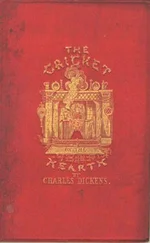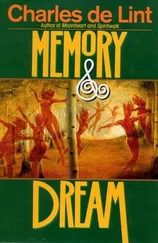She looked at him, finally registering the odd catch in his voice.
“You’ve never seen them before, either, have you?” she said.
Tommy didn’t answer. He didn’t have to. The wonder in his eyes said it all.
Caras vemos, coazones no saoemos.
Faces we see, hearts we know not.
—Spanish proverb
Nogales, Sonora, October/November, 1990
At the end of October, when Anglo children were preparing for Halloween, the San Miguel household readied itself for el Festival de Communion con los Muertos, more commonly known as los Dias de Muertos, the Days of the Dead.
Mama would pack the family into Abuela’s pickup and they would go to stay with her brother’s family in Nogales on the Mexican side of the border. Papa would come, too, walking into the desert to find his own way south from Tucson. Mama would pretend ignorance as to how he traveled, but Abuela and Bettina knew. Bettina would watch the skies the whole drive down to the border, looking for hawks. She knew better than to talk to her sister about it. Adelita remained forever embarrassed by a father who had never ridden in any sort of vehicle powered by an internal combustion engine, who wouldn’t even sleep under a roof if the floor underfoot wasn’t dirt.
They left home early on October 27th, reaching Tio Raphael’s house outside of Nogales in plenty of time to help hang water and bread outside as offerings for the spirits of those with no survivors to greet them and no home to visit—meager offerings, perhaps, but at least the visiting souls found something. On October 28th more food and drink were placed outside the house, this time for spirits of those who died by accident, murder, or other violent means. On the night of the 31st, when Anglo children went trick-or-treating door to door, the spirits of dead children came to visit, staying no later than midday of November 1st when the church bells began to ring to welcome the adult spirits, the Faithful Dead.
This was the time that the family formally greeted the most recently deceased adult, acknowledging through him or her all of their ancestors. In Tio Raphael’s home, the candles and copal incense were burned for Gerardo Munoz, Mama’s oldest brother. Afterwards, Tio Raphael led the family to the homes of his neighbors who had lost a family member during the past year. Food was offered to these spirits as well, but also treasured belongings from times past. A familiar guitar. A holy image. A favorite brand of cigarettes. A bottle of soda. Anything to make the visiting spirits feel at home.
The days were busy, as there was always something to do, some errand to run. A child to comfort, a baby to hold. Sauces needed stirring, nuts had to be ground, fruits sliced. There was always someone being fed, someone hurrying to the market for more peppers or squash, tortillas being heated and spread with chile sauce, a baby bottle being refilled. With each passing day the altar for Tio Gerardo filled with added fruit and candies, flowers, a bottle of tequila, a hot mug of atole, pink and blue colored pan de muerto, fresh from the bakery.
At sundown of the 1st, everyone went to the public cemetery for the all-night vigil of communication with the dead.
They came by the thousands. Outside the Panteon Nacional, the traffic was bumper to bumper, with countless others arriving on foot, climbing down from the hills above, walking along the dirt road in groups of three and four and more. Inside the cemetery it was impossible not to step on a grave. There were people everywhere, of all ages. They sat on the stones or drew up chairs, stood in clusters. All the graves had been repaired, the area about them swept and cleaned, the stones bedecked with new coats of paint. Tombs, gravestones, slabs, crosses.
It wasn’t quiet. There was talking and laughter and gossip, recorded music from radios and cassette players, live music from the small mariachi bands who strolled through the crowds playing for a fee. Commerce was everywhere, with vendors selling flowers, balloons, blankets, food and drink, calling from their booths, even using loudspeakers. Many brought their own food as the San Miguel and Munoz families did. Spicy mole, corn-wrapped tamales, tortillas, autumn fruits, pan de muerto, sugar skulls.
The graves were covered with carpets of colorful marigolds, baby’s breath, and purple cockscomb. Copal incense burned, filling the air with its pungent scent. Candles were lit and placed on the gravestones, one for each lost soul, until by midnight the acres of graves in the Panteon Nacional were filled with thousands of candles flickering in the windy autumn darkness. It was at once an eerie and a magical sight. Wrapped in blankets as the night cooled, the crowd thinned, but many stayed through dawn and into the following day.
By the evening of the 2nd, the party was over. The ghosts returned to the world of the dead, encouraged to leave by masked mummers whose job it was to scare away any of the stubborn spirits who tried to linger too long.
“They are brave behind their masks,” Papa remarked one year.
“Claro,” Tío Raphael told him. “Los espiritus can’t see their true faces.”
“Aquíestamos,” Mama put in. “Encuéntrenos sí puedes.” We are here… find us if you can.
Tio Raphael tried to hand him a skeleton mask but Papa smiled and shook his head.
“At this point in my life,” he said, “it would take more than a mask to make me invisible.”
There was a moment of uncomfortable silence until Abuela said, “Then perhaps you should bathe more often.”
“Sí,” Papa told her with a grin. “I could put on a dress and wear perfume as well.”
The tension broke with laughter and the moment was forgotten, but it reminded Bettina once again of how differently they saw the world from the others. Abuela, her papá, she herself. The others left offerings for the dead, spoke to them, but Bettina could see them, from the sad little dead children on the night of the 31st, to the crowds of ghosts who gathered in the cemetery two days later.
This year was no different. When they had their picnic on Gerardo’s grave, candles dripping wax onto the newly painted gravestone, Gerardo’s spirit was there, smiling conspiratorially at her as he inhaled the odors of the food and drink they had brought, breathed deep the incense and the scent of the candles. He was already gone when the family began to pack up to leave.
Abuela remained behind when the others left, ostensibly to clean up the mess they had left and commune a little longer with the dead. This was the third year that Bettina stayed to help her. There was little to pick up, and no family spirits left to commune with, but that wasn’t why they stayed. It was to do what the mummers in their skeleton masks did, scaring away the stubborn spirits, but Abuela was so much more effective at the task. She sent them on with affection and reasoning.
While Bettina finished gathering their trash, Abuela knelt by her son’s gravestone and laid a kiss on the white-washed stone.
“Vayamanso, mi muerto dulce,” she said, bidding farewell to Gerardo’s ghost, then she rose to her feet.
“You loved him very much,” Bettina said.
Her abuela smiled. “Sí. I love all my children. Soy madre. How could I not?”
“Even Mama?” Bettina asked slyly, knowing how much they argued.
“Perhaps especially her,” Abuela said. “She is my only daughter.”
“Tio Gerardo was the oldest, wasn’t he?”
Bettina had known Tio Gerardo when he was alive, but only briefly. He’d died when she was very young and the memory of those long-ago days was dusty and veiled with cobwebs. She knew him better as a ghost.
Читать дальше












